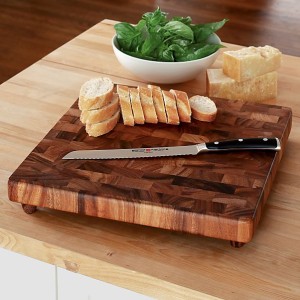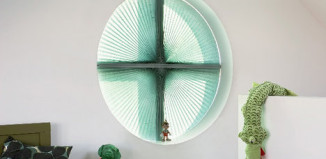Even the simplest things often help us in our everyday lives. Have you ever, for example, tried to live without a cutting board? We will advise you now how to take proper care of the underrated utensil.
It matters, what we use to cut your vegetables, meat and other food on before cooking it. The plastic cutting board does its job and does not do any harm, of course, but using a genuine wooden cutting board makes a big difference. But how about the deposited bacteria?

Poor Hygiene? Only Apparently.
To begin with, we have to explain a myth: a wooden cutting board does not host bacteria any better than a plastic one. The tests of cutting boards of different materials proved that their surfaces are mostly the same, as to the conditions for bacteria, and the difference mainly lies in the thoroughness of removing all the food residues. So it is unlikely that the wooden board is soaked with the juice from raw meat that will cause poisoning to you later.

Cleaning The Cutting Board
It is not good to soak the wooden cutting board in water or to use detergents on it. Soaking in water can cause swelling and subsequent disintegration of the wood, while detergents are often too aggressive and can add a strange smell or taste to your food. Any wet cleaning should therefore be done sensibly without large amounts of water.
After mechanically getting rid of all removable food remains, it is good to rinse the board with the mixture of water and a spoonful of white vinegar. It is a natural disinfection, which cleans the surface of any unwanted bacteria.
Before the board dries completely, you can lay it down with its work surface up and sprinkle it with coarse salt. It pulls not only the remaining moisture, but also any undesirable odours out of the wood, which have remained from cutting and slicing of raw materials. The salt will have a similar affect on an older dry cutting board, especially if you put both boards together in a plastic bag.
If you want to be even more thorough, you can take a lemon half and rub the board with it, while the salt still on. Leave the mixture of salt and lemon to work for 10 minutes or so and then rinse it.
The Treatment Before the Next Use
You should impregnate the board as frequently as you use it, which means from once in a month to once in three months. A mineral oil is used for the treatment of the wooden cutting boards. A suitable alternative is, e.g. the almond oil or other oils which do not go rancid easily (so you would better avoid the olive oil, even though you like it).
Pour a small amount of oil on the board and rub it gently using a dish cloth. Do not forget the edges. Let the oil soak for a while; do not remove any surplus oil, but rub it into the wood with another clean dish cloth.









